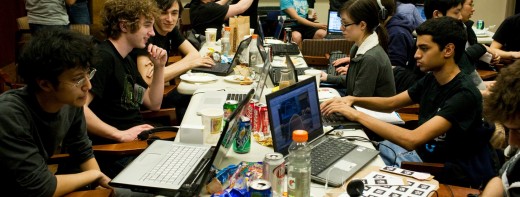
Thomas Clayton has started and run numerous high-tech startups in Silicon Valley. He is currently CEO of Bubbly, a social media startup backed by Sequoia Capital, SingTel Innov8, and JAFCO. The company is one of the largest VC-backed startups in Southeast Asia, having raised over $60 million in funding.
This is the final part of a four-part series that will provide insight into starting, building, and funding a company across Asia.. See part one here and part two here.
Now that I’ve mapped out key first steps that need to be taken and important cultural nuances to be aware of when expanding your business into Asia, many CEOs ask me if they can actually locate their engineering and product teams here and expect the same level of quality they get in the Valley.
My simple answer is: absolutely.
While Asia has long been known for its cheap engineering resources and the off-shoring tech phenomenon that took place over a decade ago, the cost gap has narrowed — and even more significantly, so has the quality gap.
Silicon Valley has long been the barometer for engineering and product talent, but that same caliber of skill that startups need is also available across Asia. It just may take a little more effort to uncover them, as the total population of engineers is so much larger than the highly concentrated group in the Valley.
If you want to build a high-caliber team here in Asia — on par with Silicon Valley — here are some tips on how to locate and attract the highly talented, cream of the crop across Asia.
Cast a wide net
When you begin recruiting folks, look far and wide — well beyond your country and even region.
Many local entrepreneurs complain about the local talent here in Singapore, but honestly what did they expect? There are only 25,000 engineers on this tiny island and a mere one percent of them are unemployed. Good luck building out a rock star team with those odds stacked against you.
Southeast Asia as a whole has a very deep well of talent, but it’s unwise to focus on any single Asian country for the entirety of your talent search. These individual countries simply don’t have enough depth and although China and India have seemingly large pools, you should only skim from the top in those countries.
Keep an open mind location-wise and put up job postings across many countries. Don’t focus on any one market, but instead on the over 4 billion people across all of Asia.
Another important aspect of this search is focusing on finding people in places that are immigration-friendly. This is another reason why China and India are not the best places to locate, as they tend to be extremely insular and difficult to import good prospects to. Engineers and product folks there tend to know how to build products suitable for their respective market, but not necessarily something that can take off globally.
Don’t let the idea of relocating employees scare you. It’s actually very easy and dirt cheap — often even cheaper than recruiter fees. On average, the cost of relocation for us has been less than $4,000 and we recruit from all over the world. If you truly want the best people on your team, these are the kinds of decisions you have to make and it’s a move that will pay massive dividends in the end.
Host a Hackathon
One route that we’ve found extremely successful in recruiting top talent is holding online hackathons with our top VCs. At our hackathons, developers come together for a few days to compete to see who writes the best code for a given problem.
These events attract thousands of developers from all over the world who then try to get a job at one of the VC’s portfolio companies. Our last hackathon pulled in over 5,000 developer signups. I recommend partnering with a VC if possible, as it increases the exposure and quality of turnout for the event.
With this long list, we honed in on the top 20 finalists and cherry-picked those that were across greater Asia. Ultimately, we were able to land three top developers — one from Thailand, one from Russia, and the overall hackathon winner from Korea.
Most of the other companies participating in the hackathon were based in the United States and lacked any H-1B visas, which are necessary in order to hire these folks, so we were the only company to give them substantial offers.
We paid each of them a decent raise over what they were making previously and with the negligible income tax rate in Singapore, they are taking significantly more home. In return, we now have three of the top developers in the world.
It’s a win-win for everyone. We repeat this every quarter to keep the bench well stacked.
Find the people who are NOT looking
The recruiting process shouldn’t simply be about putting up a job posting or hiring a recruiter. First of all, don’t bother with hiring recruiters in Asia, they’re cheap and there’s a reason for that. You get what you pay for. Of course, a job posting is often a necessary step, but in order to have the most successful matches, you must go beyond just posting the opening and be proactive.
Leverage LinkedIn by searching the profiles of intriguing candidates, and upgrade your account so that you can send many of them cold emails. These would be particularly effective if they came from your company’s CEO. If done right, your response rate should hover around 90 percent.
You’re looking for long-tenured employees that are always committed to their jobs. You don’t typically come across these people with a job posting or a recruiter, because they’re rarely overtly looking. But when you do reach out to them blindly, they feel flattered. You immediately have their attention when no one else is vying for it.
Make the benefits of startups and stock options very clear
Most countries in Asia have a very risk-averse culture and many candidates are more interested in the has-been tech companies like HP, Microsoft, and Cisco rather than looking to build the next Google or Facebook. The parents of these candidates, which are likely their trusted advisors, are even worse. They would much prefer their children settle down in a safe government job instead of joining a startup.
Thus, in order to get the people you want, it’s important to make a point of selling them on the value of working at a startup, like the breadth of knowledge and experience they’ll gain, increased responsibilities, faster upward mobility, the sexiness of working at a startup, and stock options.
Stock options are a completely foreign concept to most people in Asia. For the longest time, I’ve given detailed explanations to candidates about the extraordinary benefits that these can bring, but mostly to no avail.
I’ve found that the basic and most important point to get across to a candidate when discussing them is their real dollar value worth today versus their likely dollar value worth in two years. That’s it. If you take it any further, they lose interest and would prefer to just trade them in for a higher salary.
Though this process can be frustrating, be sure you understand the candidates’ concerns, make them comfortable, and earn their trust.
Once they’re on board, I typically do a stock option education session internally every six months just to ensure they really do understand how they work. This not only increases their commitment to the company and sense of ownership, but it also makes them much better recruiters for the company when explaining the upside of stock options.
Birds of a feather flock together
Great engineers want to be around and be challenged by other great engineers. Find the right person to lead the team — the stronger they are technically, the more pull it will have on other top engineers. Asia is extremely hierarchical, so the people at the top set the tone for the entire team culture. Find people who have built something with real traction and have the Silicon Valley mindset of “move fast, break things, iterate.”
To raise the bar, you have to put your absolute best engineers in the interview process and force them to ask questions even they don’t know the answers to. More specifically, test candidates on topics like advanced coding and algorithms to make them work for it, which will also make them feel like they “earned the job” when they finally get an offer.
If all of your engineers do is ask basic questions that they already know the answers to, you’ll never elevate the quality of your team and top candidates won’t be intrigued, as they won’t feel stimulated. You want to really challenge the candidate. It will make top engineers want the job even more.
Set your bar above Silicon Valley
Why wouldn’t you? 62 percent of companies in Silicon Valley are founded by foreigners.
If you do your best to skim the top of the talent pool all over the world, there is absolutely no reason why you cannot build a better team than one in the Valley. I’ve experienced building teams in both locations, which includes six companies in the Valley, and my current team in Singapore is hands down the best I’ve ever had.
It certainly wasn’t easy. And it took a lot of iterations and learning from my mistakes.
Recruiting takes serious work and dedication from the entire team — often most importantly from the CEO. In Asia’s hierarchical culture, you win a LOT of points if the CEO makes it their number one priority to be the company’s “Chief Recruiter” and take a personal interest in every candidate they’re trying to hire.
You can find the full set of Thomas’s series of posts here.
Images via Thinkstock, Thinkstock, hackny / Flickr, Thinkstock, Thinkstock, Thinkstock, Thinkstock
Get the TNW newsletter
Get the most important tech news in your inbox each week.











